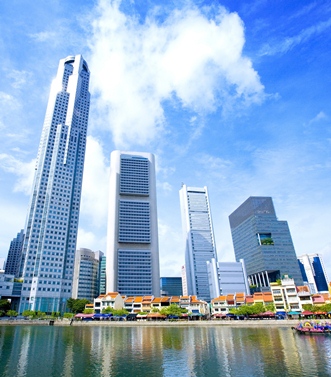Emission factors are coefficients that quantify the greenhouse gas (GHG) emissions or removals...
About USAID LEAD Program
 The USAID Low Emissions Asian Development (LEAD) program is a regional US Agency for International Development (USAID) activity that supports developing countries in Asia to achieve long-term, transformative development and accelerate sustainable, climate-resilient economic growth while slowing the growth of greenhouse gas emissions. The USAID LEAD program supports and enhances country-led development programs, plans, and policies, and complements efforts of other international donors and organizations to support low emission development strategies (LEDS).
The USAID Low Emissions Asian Development (LEAD) program is a regional US Agency for International Development (USAID) activity that supports developing countries in Asia to achieve long-term, transformative development and accelerate sustainable, climate-resilient economic growth while slowing the growth of greenhouse gas emissions. The USAID LEAD program supports and enhances country-led development programs, plans, and policies, and complements efforts of other international donors and organizations to support low emission development strategies (LEDS).
USAID LEAD builds the capacity of government and non-governmental partners in developing and using LEDS in four interrelated areas: analysis and modeling of economic development pathways, emissions trajectories, and technology options; greenhouse gas inventories and accounting; carbon market development; and regional cooperation. The program is demand-driven and tailors its activities to specific country circumstances in up to 11 partner countries: Bangladesh, Cambodia, India, Indonesia, Laos, Malaysia, Nepal, Papua New Guinea, Philippines, Thailand, and Vietnam.
As many environmental and climate change issues are regional by nature, the USAID LEAD program takes a regional approach in facilitating Asia-Pacific cooperation and knowledge-sharing, replicating best practices, promoting LEDS, and encouraging public-private partnerships. The USAID LEAD program also supports the Asia LEDS Partnership, a regional platform of the LEDS Global Partnership.
► ![]() Download the LEAD Program Fact Sheet
Download the LEAD Program Fact Sheet
Asia's Climate Change Challenge
Global climate change is one of the greatest challenges to sustainable economic development, as changing climatic conditions are increasing economic and social stresses throughout the world, particularly in Asia. To avoid the worst impacts of climate change, GHG emissions must be cut in half in the next 40 years.1 While emissions have primarily come from industrialized countries to date, most future emissions are expected to come from fast-growing developing economies.2 It is estimated that carbon dioxide emissions from energy use in Asia’s developing countries will increase from 33 percent of the world total in 2008 to 45 percent by 2050,3 and the forest and land use sector is expected to further contribute to these trends.
USAID Response
USAID is committed to helping developing countries around the world pursue sustainable economic development and improve living standards. Low-carbon, climate-resilient development is a key to achieving these goals. USAID LEAD is one of a portfolio of programs which the USAID's Regional Development Mission for Asia (USAID/RDMA) in Bangkok, Thailand supports across the Asia-Pacific region that address climate change, such as the Lowering Emissions in Asia's Forest (LEAF) program, Climate Change Adaptation Project Preparation Facility for Asia and the Pacific (ADAPT Asia-Pacific), Mekong Adaptation and Resilience to Climate Change (Mekong ARCC) project, and the Building Resilience to Climate Change in Asian Cities (M-BRACE) project.
1International Energy Agency, Tracking Clean Energy Progress, Energy Technology Perspectives 2012 (April 2012).
2OECD Environmental Outlook to 2050: The Consequences of Inaction (March 2012).
3 USAID, Energy Trends in Developing Asia: Priorities for a Low Carbon Future (2011).







